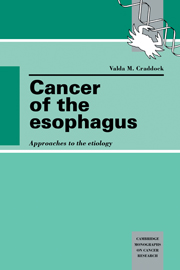Cancer of the Esophagus
The book deals briefly with the normal structure, functioning and biochemistry of the esophagus and with the histological and genetic changes accompanying the development of esophageal cancer in humans and animals. Factors implicated in causing esophageal cancer are described in relation to its very dramatic epidemiology. Thus dietary deficiencies and consumption of foods contaminated by Fusaria mycotoxins are discussed in connection with the extremely high incidence of the disease in certain sharply demarcated regions in China and South Africa, and alcohol and tobacco use are discussed in relation to the epidemiology in Europe and USA. Other hazards mentioned include opium in Iran, betel nut in Asia and bracken in Japan. The sole group of chemicals known to be very potent esophageal carcinogens in animal experiments, the nitrosamines, are described especially in terms of the widespread human exposure.
Product details
May 2012Adobe eBook Reader
9781139245494
0 pages
0kg
This ISBN is for an eBook version which is distributed on our behalf by a third party.
Table of Contents
- 1. Introduction: the problem, incidence, etiology. A working hypothesis
- 2. Biology of the esophagus
- 3. Esophageal carcinogenesis
- 4. Epidemiology
- 5. Chemicals carcinogenic for the esophagus: the nitrosamines
- 6. Alcoholic beverages and tobacco
- 7. Plant products: phenolics, tannins, tea
- 8. Plant products: opium, silica, bracken, dihydrosafrole
- 9. Molds and mycotoxins
- 10. Dietry deficiencies: micronutrients, fresh plant food and protective factors
- 11. Possible mechanisms involved in carcinogenesis.








